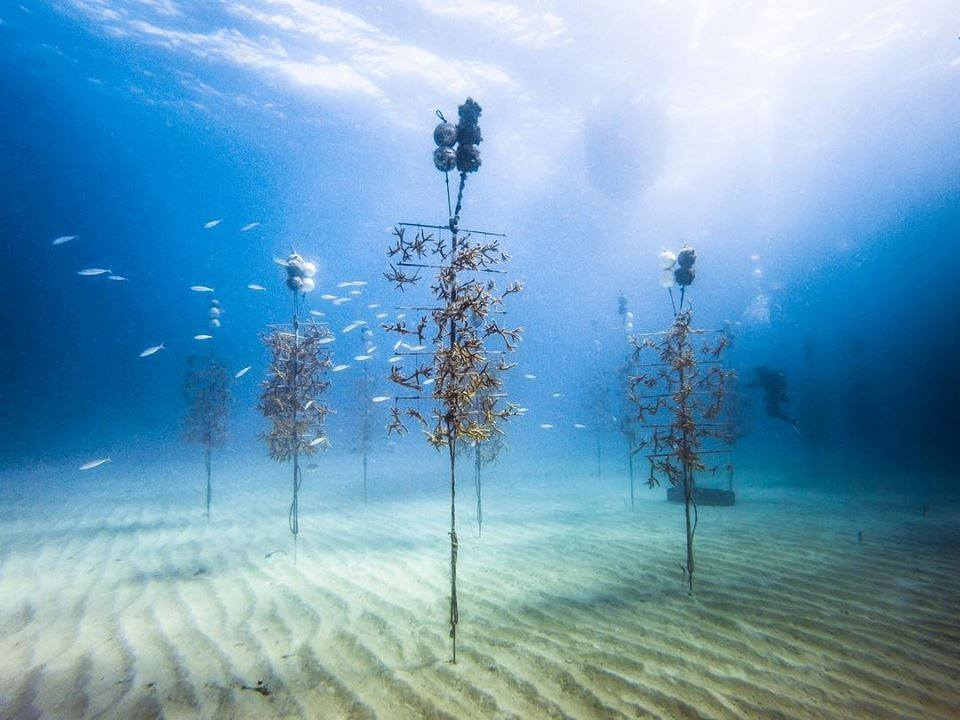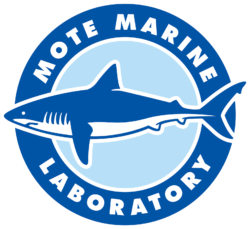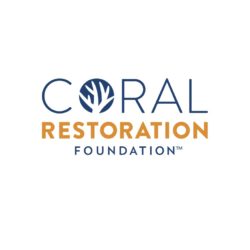
The project will strengthen coastal resilience, revitalize critical fish and wildlife habitat, and engage the community as part of NOAA’s Mission: Iconic Reefs
Key West, Fla. – November 17, 2020 – The National Fish and Wildlife Foundation (NFWF) and NOAA awarded a grant of $5 million through the National Coastal Resilience Fund to the National Marine Sanctuary Foundation in partnership with Mote Marine Laboratory & Aquarium and Coral Restoration Foundation™ to restore Eastern Dry Rocks, one of seven iconic reefs located in the Florida Keys National Marine Sanctuary.
The partners will work with NOAA’s Office of Habitat Conservation and Florida Keys National Marine Sanctuary on an unprecedented ecosystem-scale reef restoration. The project will undertake the outplanting of more than 60,000 staghorn and elkhorn corals, and engage professional divers and community stewards to clear nuisance species and debris from the reef to prepare and maintain the restoration site. Finally, the partners will monitor the restoration’s success and its benefits to coastal resilience.
“The iconic reefs of the Florida Keys, including Eastern Dry Rocks, are the basis for thriving ecosystems underwater and the critical tourism economy on dry land. But they remain under severe threat,” said Allison Alexander, Vice President of the National Marine Sanctuary Foundation. “Working with our partners at NOAA Office of Habitat Conservation and Florida Keys National Marine Sanctuary and our Florida Keys chapter, this project will transform how we address coral reef degradation and engage communities in stewarding our ocean. We appreciate the tremendous support from NFWF, NOAA, and the partners of the National Coastal Resilience Fund for this critical effort.”
“One of the most vital ecosystems in the world are coral reefs, the rainforests of the sea. Florida’s Coral Reef not only provides the foundation for immense biodiversity, critical ecosystem services and Mother Nature’s shoreline protection for our communities, but also supports over 70,000 jobs in the Florida Keys,” said Mote Marine Laboratory & Aquarium President & CEO Dr. Michael P. Crosby. “Unfortunately, this vital ecosystem is slipping into functional extinction before our eyes. Mote’s role as a core partner in Mission Iconic Reefs is to integrate our significant knowledge and expertise of innovative resilient restoration science with the important assets of our partners. We look forward to working with the Sanctuary, and all our community partners, in this strategic effort to restore Eastern Dry Rocks.”
“This grant signals a turning point for reef restoration; it is a hugely significant contribution to the ‘Mission: Iconic Reefs’ effort. For CRF™, kicking off the work at Eastern Dry Rocks is about more than the 35,000 corals we will be providing, we see this as the beginning of an era of focused cooperation around reef restoration. And it is happening not a moment too soon,” said Scott Winters, CEO, Coral Restoration Foundation™.
In 2019, NOAA announced Mission: Iconic Reefs, an initiative to restore nearly 3,000,000 sq. feet, about the size of 52 football fields, of the Florida Reef Tract – one of the largest strategies ever proposed for coral restoration. IR is the product of a public/private partnership of subject matter experts from government, academia, and the private sector to plan for comprehensive reef-scale restoration in the Florida Keys National Marine Sanctuary. This project is the first of its kind in the Florida Keys to comprehensively address the restoration needs at one site and it will represent the largest coral restoration project in the region.
Residents of the Florida Keys value the benefits that the reef tract provides to their communities and economy, and they strongly support reef restoration. In 2019, the Foundation released a study showing that economic activity generated in Florida Keys National Marine Sanctuary is responsible for contributing $4.4 billion and 43,000 jobs across the state of Florida.
Coral reefs are effective in mitigating coastal hazard risks and increasing coastal resilience. They provide substantial protection against coastal storms and storm surges by reducing wave energy by an average of 97 percent. The structural complexity of coral reefs plays a crucial role in dissipating wave energy and protecting coastlines. With its proximity to Key West, the most populous community in Monroe County, the reef at Eastern Dry Rocks provides a natural defense from coastal storms and storm surges.
Contact:
National Marine Sanctuary Foundation: Chip Weiskotten, 518.669.3936, chip@marinesanctuary.org
Mote Marine Laboratory & Aquarium: Stephannie Kettle, 941.302.4997, skettle@mote.org
Coral Restoration Foundation™: Alice Grainger, 415.770.8952, alice@coralrestoration.org
###
The National Marine Sanctuary Foundation, established in 2000, is the official non-profit partner of the National Marine Sanctuary System. The Foundation directly supports America’s national marine sanctuaries through our mission to protect species, conserve ecosystems and preserve America’s maritime heritage. We accomplish our mission through community stewardship and engagement programs, on-the-water conservation projects, public education and outreach programs, and scientific research and exploration. The Foundation fosters innovative projects that are solution-oriented, scalable and transferable, and develop strategic partnerships that promote the conservation and recovery of species and their habitats. Learn more at marinesanctuary.org.
Mote Marine Laboratory & Aquarium, based in Sarasota, Florida, has conducted marine research on Florida’s Gulf Coast since its founding as a small, one-room shark laboratory in 1955. Since then, Mote has grown to over 20 research and conservation programs that span the spectrum of marine science: aquaculture systems that alleviate growing pressures on wild fish populations; red tide research that works to inform the public and mitigate the adverse effects of red tide with innovative technologies; marine animal conservation and rehabilitation programs that protect animals such as sea turtles, manatees, and dolphins; and much more. Mote Aquarium, accredited by the Association of Zoos & Aquariums, is open 365 days per year.
Mote’s Elizabeth Moore International Center for Coral Reef Research & Restoration (IC2R3) on Summerland Key is a global research epicenter where Mote scientists and colleagues from around the world work to advance the understanding of the Florida Keys’ intricate and precious marine ecosystems, while also implementing major science-based coral restoration initiatives. Mote scientists and partners at IC2R3 contribute to global research regarding coral disease, restoration, and genetics, as well as a myriad of other important marine topics: stone crab fisheries, ecosystem dynamics and resilience, ocean acidification and its effects, and more.
Learn more at mote.org or connect with @motemarinelab on Facebook, Twitter, Instagram, YouTube, and more.
Coral Restoration Foundation™ (CRF™) manages the largest coral restoration effort in the world. Our core mission is to restore coral reefs, to educate others on the importance of our oceans, and to use science to further coral research and coral reef monitoring techniques.
Through large-scale cultivation, outplanting and monitoring of genetically diverse corals, CRF™ works to support the reefs’ natural recovery processes. We engage and empower others in the mission with dive programs, educational activities, scientific collaborations, and outreach.
For more information, and to find out how you can get involved, visit www.coralrestoration.org.



